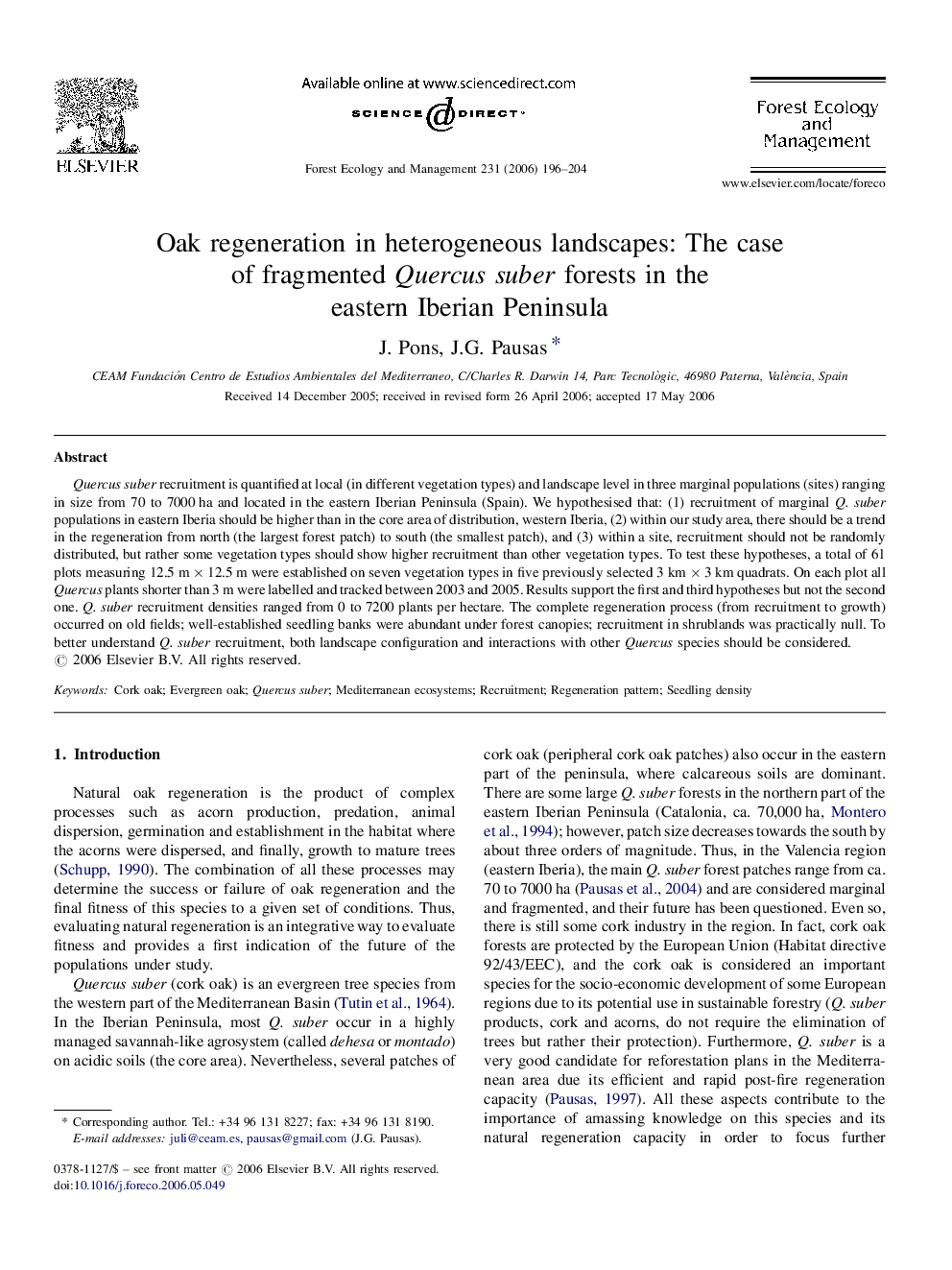| Article ID | Journal | Published Year | Pages | File Type |
|---|---|---|---|---|
| 90880 | Forest Ecology and Management | 2006 | 9 Pages |
Quercus suber recruitment is quantified at local (in different vegetation types) and landscape level in three marginal populations (sites) ranging in size from 70 to 7000 ha and located in the eastern Iberian Peninsula (Spain). We hypothesised that: (1) recruitment of marginal Q. suber populations in eastern Iberia should be higher than in the core area of distribution, western Iberia, (2) within our study area, there should be a trend in the regeneration from north (the largest forest patch) to south (the smallest patch), and (3) within a site, recruitment should not be randomly distributed, but rather some vegetation types should show higher recruitment than other vegetation types. To test these hypotheses, a total of 61 plots measuring 12.5 m × 12.5 m were established on seven vegetation types in five previously selected 3 km × 3 km quadrats. On each plot all Quercus plants shorter than 3 m were labelled and tracked between 2003 and 2005. Results support the first and third hypotheses but not the second one. Q. suber recruitment densities ranged from 0 to 7200 plants per hectare. The complete regeneration process (from recruitment to growth) occurred on old fields; well-established seedling banks were abundant under forest canopies; recruitment in shrublands was practically null. To better understand Q. suber recruitment, both landscape configuration and interactions with other Quercus species should be considered.
